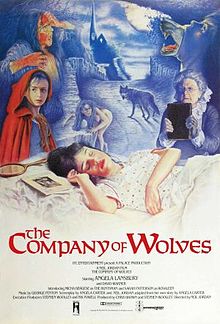Tenement Living
While I’ve been a perpetual tenant, I’ve been lucky enough to never have lived in a tenement. If I stretch the definition beyond living quarters to include the space I work in, then I’ve spent time in a few tenements.
The definition of a “tenement” today includes the ideas of overcrowding combined with an “unsafe” atmosphere. I’ve worked in jobs with unsafe atmospheres. You may recall my story about an over zealous blueprint machine that filled my office with ammonia. But there was a far more heinous job in my past that tried to kill me. This was way back in the days before personal computers. Call them the dark ages, or the darkroom ages. Back then if an image needed to be duplicated, enlarged, put through a filter or what have you, it was done photographically. I worked in three separate companies that had three different darkroom setups. The one I call a tenement had a darkroom so small it barely held the stat camera and the operator.
I should explain that a stat camera was a large copy-camera with a built in lighting system. Stat cameras were usually vertical camera with the lens pointing toward the floor and the film back flat like a tabletop. The film back usually hovered about chest high to an average person, and it raised and lowered to focus. A typical stat camera used a copy platform with a built-in vacuum system. The vacuum held the material to be photographed flat.
This tenement where I worked had a stat camera room, which was entered through a large black tube with a revolving door. It was such a small space the camera operator needed to stand in this tube and reach through the door to use the camera. This tenement like a real tenement had No ventilation.
The tenement was really an advertising agency on its last legs. It may never have been a great success, but it was definitely in free fall when I walked in the door. The company began operating in Chicago, an advertising super hub, but when I found it, it had moved to Rockville, Maryland. I never knew the complete history of the company. But later, as I was quitting, I found out that the owner had a problem with drugs and his business was suffering along with his personal life.
This tenement building was across the street from the Rockville government center. About two short blocks from the library. The tenement was on a shady tree-lined lane and had a very impressive open front area. A good four fifths of the total space was up front where the salesman’s desks were arranged. The back room art department was also impressive. One entered through a sunlit loft. The art department was on the other side of a partition that ran through the entire space. It occupied the remaining fifth, but was further divided into a large derelict photographic studio on the ground floor and a very hectic graphic art area with four workstations in the loft.
Eventually we artists found out that this tenement/ad agency had a practice of working on spec. That is, we created whole campaigns that were speculative ventures. The art department would create concepts for the sales people to take to clients. But the clients were only prospects. They never asked for the artwork and they rarely, if ever, wanted to buy our services. The salesmen would return and say that the client was not happy with the art. The sale team obviously also lied to us about deadlines. We worked overtime on presentations that were, just a prop for an exposed salesperson to bolster their courage behind. They played us for suckers, and ignored our complaints about the stat camera that was trying to kill us.
The design of the art department loft was handled before I started work there. They installed a stat camera into an air-less closet. I was familiar with many types of stat cameras, by this time. But this one was different. Some how this camera’s lighting system burned oil. I don’t know how or why. It might have been that the vacuum used hydraulic oil that leaked onto the lights. We could see the smoke coming from the lights. The unhealthy air slowly filled the closet while we worked. The best you could do was focus the camera quickly and get out of the closet while the exposure was happening. Still you would need to return and process the film or paper. I remember feeling the droplets form on my lungs. I had a constant cough, but I needed the job. In fact when they could no longer pay us suckers, we walked away and the place was gone within a week.
PART 2
Summer in a Tenement
Before the ad agency, before I started working in the world full-time, I toiled in another tenement. One summer, I worked as a laborer on a construction site. We were building a handball court in State College, Pennsylvania. The walls were made of 12-inch cement blocks. If you describe a cement block you might start by saying it’s very heavy or hard, but what isn’t commonly known is that they are also very sharp. The texture is quite course, with sharp little edges. I was tasked with moving the blocks to where the masons were building the walls. The blocks would tear through my gloves like industrial cheese graters. I went through about a pair and a half of gloves a day. Somewhere between glove changes, my hands would feel the sharp edge of a block. By the end of the summer my hands were a mess of calluses.
When the construction of the handball court tenement reached the second floor, I was shown how to use a new piece of equipment on the site. I fed a conveyor belt with the 12-inch blocks, which were then carried by the machine up to the second floor. The conveyor would be manned at each end. Another laborer at the top would unload.
The device had a few quirks. First it squeaked very loudly as if it were on a stage projecting its song to the back row. If you’ve ever heard the musical Westside Story, you might remember the song “I Feel Pretty.” That is what the block elevator sang. It squeaked in the exact same tone intervals and rhythm as the song. All day it squeaked: “I feel pretty.” “I feel pretty.” I feel pretty and witty and gay.” But it never continued on with the song passed that. I think this was because it was just a squeak. An accidental sound rising from a motorized gear turning a chain that propelled metal shelves upward. Gravity caused the shelves to drag against the metal frame as they moved. That was the squeak. If it had two more shelves, it would squeak a different tune.
It was not a pretty machine. It needed paint, the sharp blocks and indifferent treatment by laborers had scarred the machine’s surface. It was never designed to be stylish. It had ugly rubber tires sticking out. It had a big ugly motor strapped on one side. It was plugged in with an extension cord that snaked through the job site.
The squeaking was hard to deal with. It was loud enough to make me want to plug my ears and it was also continuous. This however, didn’t make the handball court a tenement. It was the final quirk of the conveyor belt.
Some dewy mornings or days after a rain, the block elevator gave out a shock when the block was in contact with both the elevator and the laborer, me. There must have been an electrical short somewhere and the device wasn’t grounded. The extra electricity in the frame traveled through the blocks straight into me. The only way to avoid a shock was to drop a block a few inches above the conveyor belt. This isn’t as easy as it sounds. It’s natural to set something heavy down and push off as you straighten up. Also holding a block suspended above the target isn’t as easy as swinging it up and guiding its fall. This is something you learn after being shocked over and over. I could barely afford my gloves, food and rent. So it didn’t occur to me to show up for work with a grease gun to end the squeaks and a roll of electrical tap or a ground wire or a rubber mat, something for the shock treatment.




